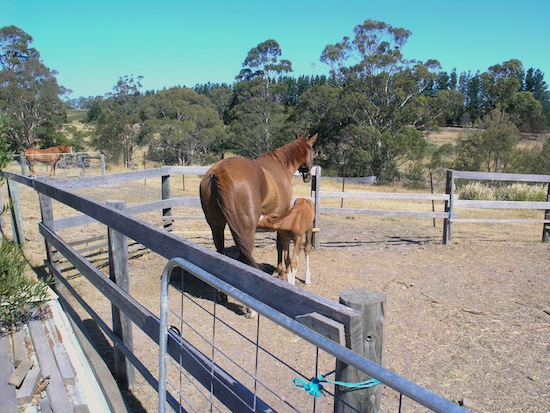The progress of Tasmania’s climate program will remain excruciatingly slow so long as key people remain disengaged. [9 October 2012 | Peter Boyer]

The government is seeking Tasmanians’ views about adapting to likely climate impacts in coming decades.
The state government’s release last week of an “issues paper” on adapting to climate change, a month or two ahead of a second one on cutting greenhouse emissions, begged a few questions.
Asking for public feedback on how we should prepare for the effects of climate change before we sort out what we should do to reduce those effects seems to be putting the cart before the horse.
It’s as if the government believes preparing for future climate is a higher priority than reducing emissions, or that it sees the latter as being a federal responsibility. Or it may see adaptation as the best way of getting people engaged with the whole issue.
Climate Change Minister Cassy O’Connor has previously said that cutting emissions (mitigation) is her primary policy goal. I’m sure that remains the case, but the sequencing of adaptation ahead of mitigation highlights a real dilemma for the government.
With good reason, state Labor determined in 2007 that climate change was a major policy issue. It legislated targets for cutting emissions and set up infrastructure for garnering information, advising government and coordinating actions. But getting real, physical results has been quite another thing.
Now, a different Labor government with a Green tinge is trying to get down to the nuts and bolts, but in a very different political environment. Right now there’s no pressure to act from a community preoccupied with economic issues and seeing no visible signs of climate change.
The state opposition has vacated this policy space (if it was ever there). While getting the odd mention by spokesman Matthew Groom, the whole issue of climate change seems to have passed Will Hodgman by. Perhaps he’s joined that group of Liberal MPs who think it’s a left-wing plot.
The record of this Labor-Green government on implementing measures to reduce emissions and develop resilience in the face of climate change remains weak, but in the context of the opposition’s non-appearance in the debate, there’s reason to feel grateful for any initiative, no matter how small.
“Adapting to Climate Change in Tasmania” represents the first time the government has sought broad public input to what will over time become a massive policy issue. It asks Tasmanians to look at how our changing climate will affect their lives, their work and their communities.
It sets out what the government sees as major climate impacts on Tasmania’s natural systems, including water catchments, and its communities, industries and infrastructure. Against each category it asks questions of its readers.
O’Connor asks Tasmanians to apply their “innovative and practical” thinking to these questions to help identify the main threats and opportunities that an adaptation policy should tackle, as part of a planned comprehensive climate plan scheduled to be released next year.
The issues paper specifies four areas of state government responsibility: informing the public, taking account of climate change in government activities, managing risks to state-owned infrastructure and services, and helping vulnerable communities to build resilience.
It follows the guidelines agreed to by the “Select Council on Climate Change” set up in January 2011 by the Council of Australian Governments (COAG), which specify that “climate-related risks should generally be assigned to those best able to manage them”.
This puts the onus firmly on private people and businesses to consider potential climate impacts on their property and prepare accordingly. People seeking compensation for mishaps, such as flooding of a waterfront block, are unlikely to get much joy.
So five years after an earlier Tasmanian government accepted climate change as a major risk, and with a full emission-reduction plan yet to appear, the present government is asking Tasmanians to help it devise strategies for adapting to the changes brought about by excessive emissions.
This glacial rate of progress shouldn’t surprise us.
Stung by criticism of its internally-formulated 2011 “action plan”, widely seen as poorly-resourced and ineffectual, the government is now trying to engage with the broader Tasmanian community before it brings out what will hopefully be a much more comprehensive plan.
One sticking point that’s bedevilled the whole history of the government’s response to climate change seems to be still in place. The cabinet may have signed off on this paper, but there’s no sign that top managers and professionals in key areas of the public service are engaged with the issues it raises.
We need to see evidence of their hand in this process. We need to know that government planners, engineers, land and infrastructure managers have put their minds to these big questions and come up with professional conclusions.
Until the senior public servants making up this crucial part of government see climate change as their personal concern, affecting all their decisions, then all the action plans and issues papers will go nowhere and emissions will continue to rise.
So too will the need for radical action to protect ourselves from dangerous climate change. That’s a vicious circle we can do without.
• The issues paper is available from the government’s Tasmanian Climate Change Office website. The deadline for submissions is 16 November.
